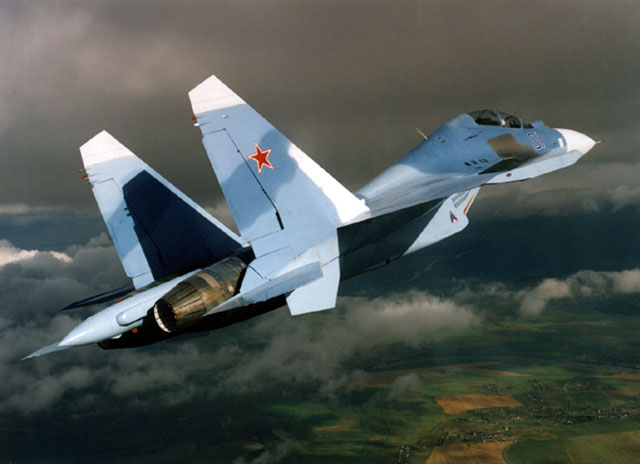Su-30 (Su-27P) is a two-seat long-range intercept fighter that first flew in December 1989, and entered service with the Russian air forces in 1992. The Su-30 created in Irkutsk. Largely based mostly on the Su-27UB two-seat trainer, it's a new radiolocation system which can transmit the positions of 10 targets to four different fighters at the same time. The the so-called Su-30 series of aircraft began with the Su-27M - in effect a concept demonstrator renamed the Su-35 - the Flanker has evolved into the Su-30 multirole fighter, the Su-32 and Su-34 tactical bomber, and also the Su-33 naval variant. The leading visual difference between the Su-30K and the Su-30MK are canards just under & slightly behind the rear cockpit, TVC nozzles and a twin wheel nose landing gear.
The Su-30 compares favorably with Su-27UB in respect to the distribution of functions between the crewmen. the main distinction is that the workstations in the Su-30 are more similar to each other that clearly distinguishes this fighter from typical two-seat trainers. currently the rear-seat pilot/operator is able in a position is ready to quickly input the coordinates of the new navigation points into the navigation system and airborne weapons system that's used to intercept targets in a long-range rocket engagement.












